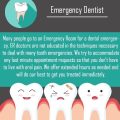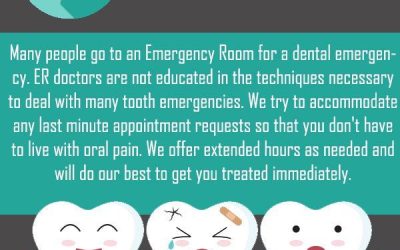So you’ve had a little accident, huh? Maybe a sports mishap or an unforeseen collision. Whatever the case may be, one thing is for sure – you’ve experienced facial trauma. It’s not a pleasant situation to be in, and aside from the physical pain, there are probably a million questions swirling through your mind. What should you do next? How serious is your injury? Well, fret not, because in this article, we’re going to shed some light on facial trauma, its causes, symptoms, and the best course of action to take.
Overview
Facial trauma refers to any injury or damage to the face, including the skin, bones, and soft tissues. It is a broad term that encompasses a range of conditions resulting from accidents, falls, sports injuries, assaults, and other forms of physical trauma. These traumatic events can cause visible injuries, pain, swelling, bleeding, and difficulty in breathing. Prompt diagnosis and appropriate treatment are crucial in managing facial trauma to minimize complications and achieve the best possible outcome.
Signs and Symptoms
Facial trauma can result in various signs and symptoms, depending on the extent and nature of the injury. Visible injuries such as cuts, bruises, or fractures may be obvious upon examination. Pain in the affected area is common and may worsen with movement or pressure. Swelling can occur and may be accompanied by a sensation of tightness or pressure. Some injuries may lead to bleeding, either externally or internally. Difficulty in breathing can also be a sign of facial trauma, particularly if the nose or jaw is affected.
Diagnosis
To diagnose facial trauma, a healthcare professional will perform a thorough physical examination. This may involve assessing the visible injuries, checking for range of motion, and evaluating sensation and motor function in the face. Depending on the specific circumstances, imaging tests such as X-rays, CT scans, or MRI scans may be ordered to assess the extent of the injury and identify any underlying damage. In complex cases, specialty consultations with maxillofacial surgeons, otolaryngologists, or ophthalmologists may be necessary.
Treatment
The treatment of facial trauma depends on the type and severity of the injury. In cases of severe trauma or life-threatening conditions, immediate emergency care is essential. This may involve stabilizing the patient, controlling bleeding, and ensuring proper airway management. Surgical intervention may be necessary to repair fractured bones, close wounds, or reconstruct damaged tissues. Non-surgical treatments such as medication, immobilization, or physical therapy may be prescribed to aid in the healing process. Recovery and rehabilitation are crucial aspects of treatment, as they contribute to restoring function and minimizing long-term complications.
Complications
Facial trauma can lead to several complications, depending on the nature and severity of the injury. Infections can occur if wounds are not properly cleaned and treated. Nerve damage may result in sensory or motor deficits in the affected area. Scarring is a common concern, particularly in cases where surgical interventions are required. Facial trauma can also result in cosmetic deformities, which can have a significant impact on a person’s self-esteem and quality of life. Prompt treatment and appropriate follow-up care can help minimize these complications.
Prevention
Preventing facial trauma involves implementing safety measures and using protective equipment in various settings. For instance, wearing seatbelts while driving, using helmets during sports activities, and avoiding risky behaviors can help reduce the risk of facial injuries from accidents and falls. In specific industries or occupations with a higher risk of facial trauma, appropriate safety protocols should be established and followed. Protective gear such as face shields, goggles, or masks can provide added protection in certain situations.
Prognosis
The outlook for individuals with facial trauma varies depending on the severity and extent of the injury, as well as the response to treatment. Minor injuries may heal without long-term effects, while more complex trauma may require ongoing management and intervention. In some cases, significant facial trauma can have lasting physical and psychological impacts, affecting the individual’s self-esteem, social interactions, and overall quality of life. Close monitoring, follow-up care, and access to support and resources are essential in achieving the best possible prognosis.
Support and Resources
Facial trauma can have a significant impact on an individual’s physical and emotional well-being. Support groups can provide a valuable forum for individuals to share their experiences, seek guidance, and gain emotional support. Counseling services may also be beneficial in helping individuals cope with the psychological effects of facial trauma. Rehabilitation centers can provide specialized care, therapies, and resources to aid in the recovery process. It is important for individuals and their loved ones to explore these support and resource options to facilitate the healing journey.
Research and Innovations
Advancements in facial trauma treatment are continuously being made to improve outcomes and enhance patient care. Researchers are exploring new surgical techniques, such as minimally invasive approaches and computer-assisted procedures, to reduce invasiveness and optimize results. Innovative technologies for imaging and surgical planning are aiding in the precise assessment and treatment of facial injuries. Ongoing research studies are focused on improving techniques for wound healing, minimizing scarring, and optimizing the long-term functional and cosmetic outcomes of facial trauma management.
Conclusion
Facial trauma is a complex condition that can have significant physical and emotional consequences. Prompt diagnosis, appropriate treatment, and follow-up care are crucial in managing this condition effectively. The immediate care provided during emergencies can be life-saving, while surgical intervention and non-surgical treatments play crucial roles in restoring function and minimizing long-term complications. Prevention through safety measures and protective equipment is essential in reducing the risk of facial trauma. Accessing support and resources can help individuals cope with the challenges posed by such injuries, while ongoing research and innovations aim to further advance facial trauma management and optimize patient outcomes.












